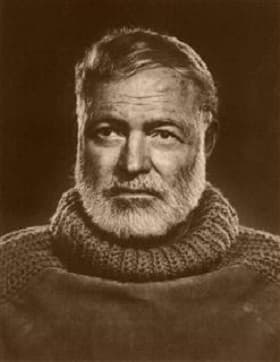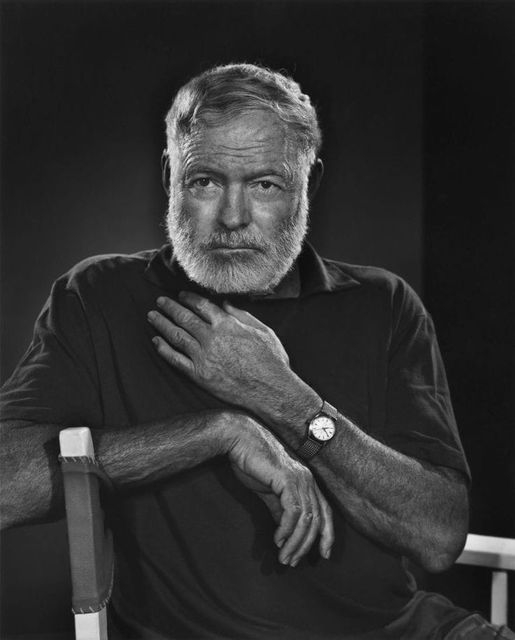ERNEST HEMINGWAY
By Mike Miller Updated February 19, 2022
Ernest Hemingway was born on July 21, 1899, and died by suicide on July 2, 1961. He is probably the most famous writer on this website, and there is abundant information out there about his life, career and works.
Most people don't think of him when they are discussing Florida authors.
He received the Pulitzer Prize in 1953 for "The Old Man and the Sea", and the Nobel Prize in Literature in 1954.
Hemingway's writing style is characterized by economy of words and understatement. His work has had a major influence on modern fiction writing.
His heroes are typically stoical men who exhibit an ideal described as "grace under pressure."
Many of his works are now considered classics of American literature.
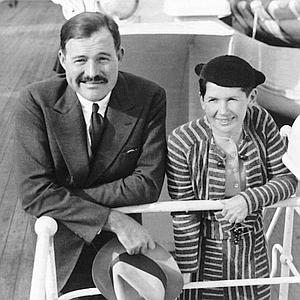 Ernest and Pauline
Ernest and PaulineErnest Hemingway and his wife, Pauline, lived in Key West for several years in the 1930s.
He had a strong work ethic, and got up extremely early every morning to start his writing.
After lunch he loved to hang out and drink for the rest of the day at Sloppy Joe's, a place that is still a popular hangout.
In many ways he was one of the first typical Key West tourists, except for getting up early in the morning.
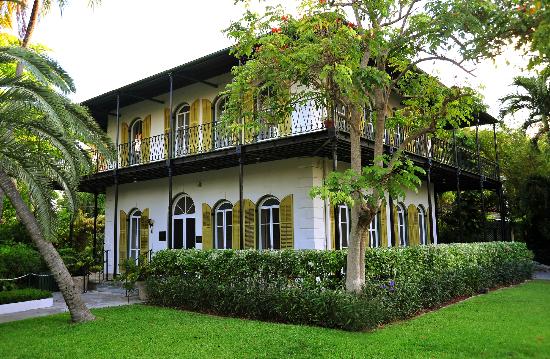 Hemingway Home, Key West
Hemingway Home, Key WestHemingway Home at 907 Whitehead Street is still a popular tourist attraction. The house is open to the public for tours 365 days a year from 9 to 5.
Many other writers also have lived in Key West, but we don't consider them Florida authors. Consider Tennessee Williams, Truman Capote and many others.
A neat little book is "The Key West Reader", edited by George Murray. The book features work from some of the best known Key West writers from 1830 to 1990.
HIS FLORIDA BOOK, "TO HAVE AND HAVE NOT"
"To Have And Have Not" is the only book with a Florida setting that Hemingway wrote in his Key West years and is the reason we include him among Florida authors.
The book was written in 1937, and is a novel about Harry Morgan. Humphrey Bogart played Harry in the film of the same name.
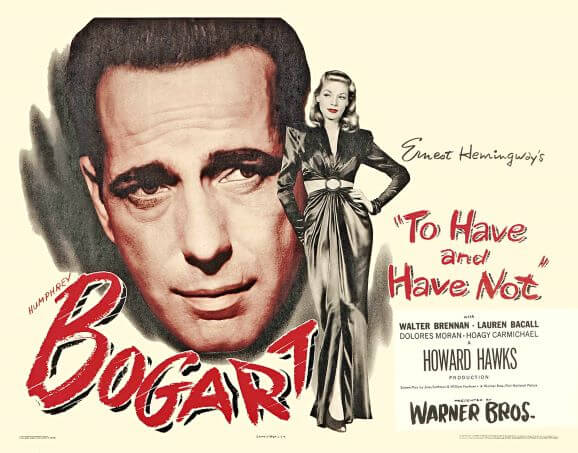 Movie poster for "To Have and Have Not"
Movie poster for "To Have and Have Not"Harry is a fishing boat captain who runs contraband between Cuba and Key West. The novel depicts Harry as a basically good man who is forced into black market activity by economic forces beyond his control.
The Great Depression features prominently in this book, forcing depravity and starvation on the residents of Key West, referred to as "Conchs." That rhymes with "Conks".
Another recent interesting book, especially if you're a cat lover, features a photographic history of Hemingway and his cats: "Hemingway's Cats".
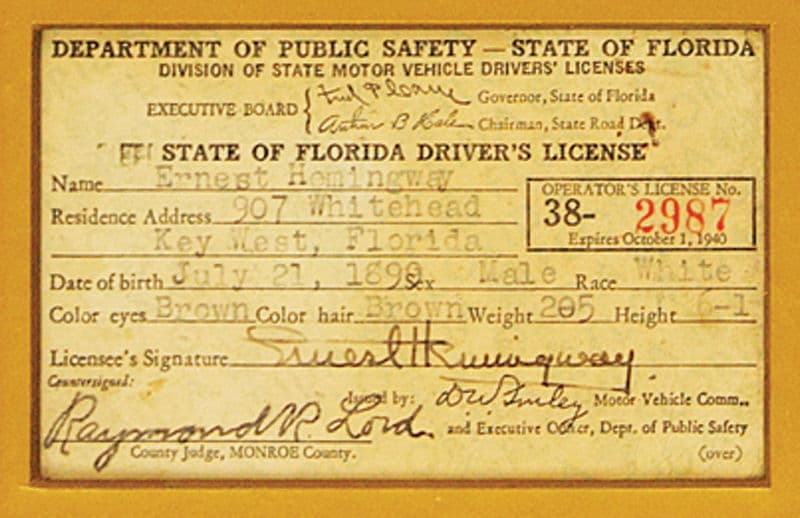
From my archives, here is Ernest Hemingway's Florida drivers license with an expiration date of October 1, 1940.
FACEBOOK POST FROM HEMINGWAY IN FLORIDA
Hemingway in Florida December 2, 2021
In Hemingway's short story, "The Strange Country", the characters stop for lunch in an unnamed town. However, there are several clues that indicate the town that is referenced in the story is Arcadia.
In the story, Helena mentions that "We should have stopped at Punta Gorda,” Roger said. “That would have been sensible."
This indicates that they passed through Punta Gorda but did not stop there. Later on. Helena asks a waitress in the unnamed town where she is from, and receives the following response:
“Fort Meade,” the waitress said. “It’s right up the road.”
While the town is not named in the story, Hemingway provides a description of it:
"They ate at a lunch counter in a town in the middle of the Florida prairie. The lunch counter was on the shady side of the square and looked out on a red-bricked courthouse with its green lawn."
Helena mentions another curious feature about the area:
“Look at the cowpunchers,” she said. Two men on cow ponies, wearing western work clothes, got down from their stock saddles and hitched their horses to the rail in front of the lunch room and walked down the sidewalk on their high-heeled boots."
The descriptions provided here are strikingly similar to the descriptions of Arcadia provided in the book, "Florida: A Guide to the Southernmost State".
The descriptions of Arcadia in the Florida guide are as follows:
“Arcadia, 73.6 m. (56 alt., 4,082 pop.) an oasis in a vast Florida prairie is built around the three-story red brick courthouse that occupies a landscaped square in the center of the city. For miles on every side stretch treeless flatlands used for grazing cattle."
“Cow camps are numerous in the vicinity and give the town a frontier atmosphere; cattlemen in ten-gallon hats walk the streets…”
While Hemingway worked on writing "The Strange Country" in 1946-47 and 1950-51, the story itself takes place in the late 1930s, during the Spanish Civil War.
"Florida: A Guide to The Southernmost State" was published in 1939, which would make it a suitable reference for a story that took place in the late 1930s, especially for a writer attempting to recreate Florida as it existed a decade prior to him writing the story.
Because of these pieces of evidence, we have reason to suspect that Hemingway was not only referring to Arcadia but that he was actively using "Florida: A Guide to The Sunshine State" to map out his story.
A small detail of interest is that the waitress in the story receives autographs from the two main characters and if this part of the story is in any way drawn from Hemingway's real-life experiences, it is possible that Hemingway's autograph may be in the notebook of an unknown resident of Arcadia or Fort Meade.
Any further information about either Arcadia or the Florida Guide in relation to Hemingway would be greatly appreciated if anybody knows anything related to Hemingway and his time in Florida, please contact us at hemingwayinflorida@yahoo.com
Our Facebook page has more than 130,800 followers who love off the beaten path Florida: towns, tourist attractions, maps, lodging, food, festivals, scenic road trips, day trips, history, culture, nostalgia, and more.
By Mike Miller, Copyright 2009-2025
Florida-Back-Roads-Travel.com
Florida Back Roads Travel is not affiliated with or endorsed by Backroads, a California-based tour operator which arranges and conducts travel programs throughout the world.
